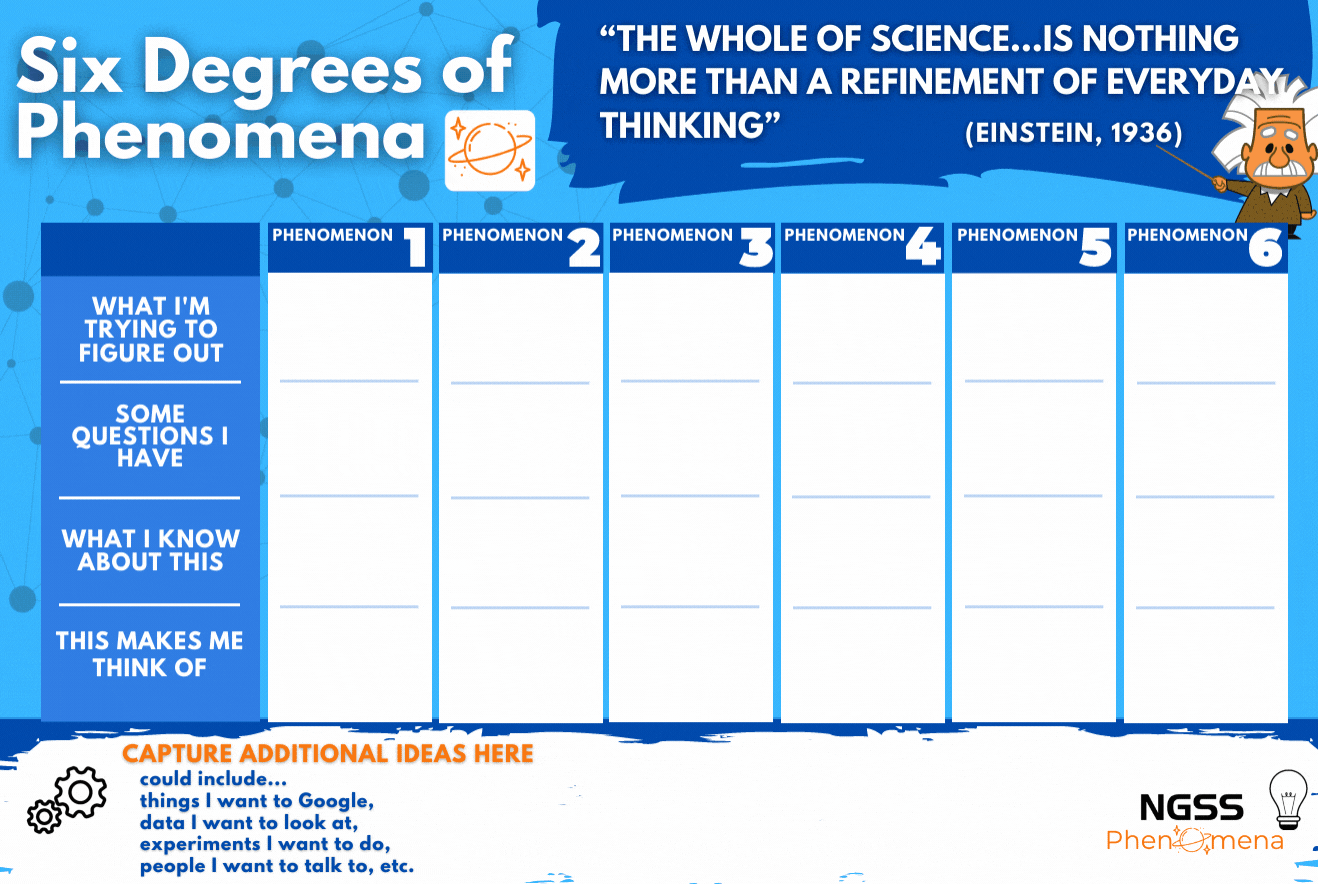Welcome to the first Phenomena in Focus post! Oftentimes an unanswered question stops our progress when we are planning - a term or a phrase acts as a barrier to progress. The purpose of this series is to tackle common questions about phenomena - and while our responses will just scratch the surface of these complex topics, our hope is that it is enough to get you unstuck and moving forward.
Anchoring Vs Lesson Level - What’s the Difference?
We have probably heard these terms - anchor phenomenon and lesson level phenomenon - and wondered, how we can tell them apart? If we aren’t familiar with phenomenon-based instruction and what a classroom centered on making sense of phenomena can look like - understanding the difference between an anchor and lesson level phenomena can prevent us from taking advantage of instructional materials using phenomena.
In this post, we will briefly describe an anchor and lesson level phenomenon and describe ways each is used in the science classroom. We end with presenting an example of an anchor and lesson level phenomenon.
What is an Anchoring Phenomenon?
An anchoring phenomenon anchors all of the learning within a unit. So, it is a unit level event that the classroom is trying to make sense of as they engage in a series of lessons.
Since the questions the students ask about the anchor drive the learning within the unit, the anchor should be complex and require an understanding of several big science ideas to explain.
At strategic moments, the class revisits the anchoring phenomenon to review their initial questions to see which they have answered, which they are making progress on, and what new questions they may have to help us continue learning about the phenomenon.
Throughout the unit, the classroom and each student should be given opportunities to share their thinking and how it relates to the anchoring phenomenon.
What is a Lesson Level Phenomenon?
Since the anchoring phenomenon is complex and requires students to understand a variety of science ideas, these science ideas need to be explored with more focused phenomena.
Lesson level phenomena are focused around specific topics that will help build toward an increasingly more complex explanation of your anchoring phenomenon.
These lesson level phenomena are not random topics but instead should support a coherent sequence of lessons which provide opportunities for students to make progress in understanding important pieces of the core ideas and science practices needed to make sense of the anchoring phenomenon.
A Quick Example of An Anchor Phenomenon and Supporting Lesson Level Phenomenon
Anchor - What can we see in the sky?
To start a unit on the Earth and stars, we asked students to create a sky observation journal in their science notebooks - what do you see in the sky during the day and night?
Choose a day for students to share their journal entries with each other and the whole class. We may recognize that we see the sun during the day, and clouds and the moon and planes in the sky. At night, we see some of the same things but we also see man-made lights, the moon and the stars. Student questions can sound like - Where does the sun go? What causes the PATTERNS we notice in the sun and moon rising and setting? Why can we see the moon during the day? Why can we see the moon at night? Where do the stars go during the day? Why does the sun look so big? How can we explain the SCALE differences in the objects in the sky?
We may recognize some student questions focus on the sky at night and some during the day. Let’s focus on thinking about the night sky.
When students recorded their observations, their journal also included a prompt to include other times they have looked at the night sky but in a different place - maybe when they visited a family member or when they went on a trip.
The night sky can look differently everywhere, even at the same exact spot depending on the night. To have a common experience we can share our observations and questions, and might even seek out some larger scale and representative views of the night sky to share with the students.
We would hope students would ask things like - Why do we see stars at night? Where is the sun? How close are the stars? Why do some stars look bigger? Why are some different colors? Why are some stars brighter?
lesson - Why are some stars brighter than others?
We had a lot of questions about how bright some objects were - today we will think more about brightness.
Prior to the class put several lights around the room. Flashlights of different intensities, whatever types of lights you can find. Sit in different seats around the room and make observations. This practice will help you facilitate as students engage and discuss.
Turn off the lights and ask the students to make observations. Students should be in their seats so the lights appear differently based on their proximity to the different lights.
Bring students together in a circle or on the rug for a sensemaking discussion. What did we notice? Can we come to consensus on a shared definition for brightness? Is brightness something we can measure? If we were to label how bright something is, would we all agree or do people sense brightness in different ways?
Based on our observations and discussion - what should we do next? Plan another investigation? Read a book on light? Watch a video? Find out some numbers of how bright different objects can be?
Post written by Chris Zieminski & TJ McKenna for ngssphenomena.com
Comment below, or email ngssphenomena@gmail.com.








